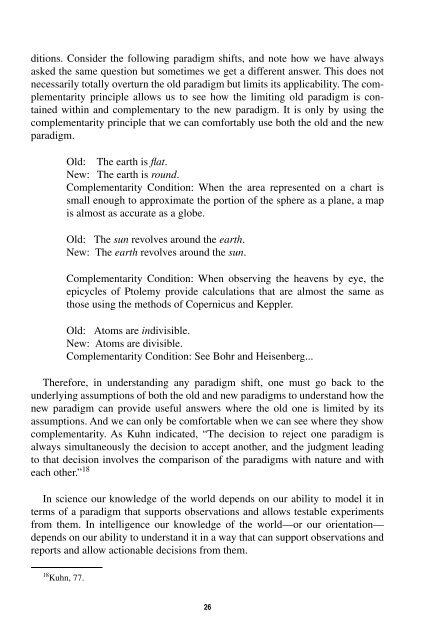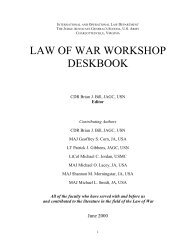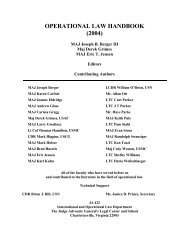Warning Analysis for the Information Age - Higgins Counterterrorism ...
Warning Analysis for the Information Age - Higgins Counterterrorism ...
Warning Analysis for the Information Age - Higgins Counterterrorism ...
You also want an ePaper? Increase the reach of your titles
YUMPU automatically turns print PDFs into web optimized ePapers that Google loves.
ditions. Consider <strong>the</strong> following paradigm shifts, and note how we have alwaysasked <strong>the</strong> same question but sometimes we get a different answer. This does notnecessarily totally overturn <strong>the</strong> old paradigm but limits its applicability. The complementarityprinciple allows us to see how <strong>the</strong> limiting old paradigm is containedwithin and complementary to <strong>the</strong> new paradigm. It is only by using <strong>the</strong>complementarity principle that we can com<strong>for</strong>tably use both <strong>the</strong> old and <strong>the</strong> newparadigm.Old: The earth is flat.New: The earth is round.Complementarity Condition: When <strong>the</strong> area represented on a chart issmall enough to approximate <strong>the</strong> portion of <strong>the</strong> sphere as a plane, a mapis almost as accurate as a globe.Old: The sun revolves around <strong>the</strong> earth.New: The earth revolves around <strong>the</strong> sun.Complementarity Condition: When observing <strong>the</strong> heavens by eye, <strong>the</strong>epicycles of Ptolemy provide calculations that are almost <strong>the</strong> same asthose using <strong>the</strong> methods of Copernicus and Keppler.Old: Atoms are indivisible.New: Atoms are divisible.Complementarity Condition: See Bohr and Heisenberg...There<strong>for</strong>e, in understanding any paradigm shift, one must go back to <strong>the</strong>underlying assumptions of both <strong>the</strong> old and new paradigms to understand how <strong>the</strong>new paradigm can provide useful answers where <strong>the</strong> old one is limited by itsassumptions. And we can only be com<strong>for</strong>table when we can see where <strong>the</strong>y showcomplementarity. As Kuhn indicated, “The decision to reject one paradigm isalways simultaneously <strong>the</strong> decision to accept ano<strong>the</strong>r, and <strong>the</strong> judgment leadingto that decision involves <strong>the</strong> comparison of <strong>the</strong> paradigms with nature and wi<strong>the</strong>ach o<strong>the</strong>r.” 18In science our knowledge of <strong>the</strong> world depends on our ability to model it interms of a paradigm that supports observations and allows testable experimentsfrom <strong>the</strong>m. In intelligence our knowledge of <strong>the</strong> world—or our orientation—depends on our ability to understand it in a way that can support observations andreports and allow actionable decisions from <strong>the</strong>m.18 Kuhn, 77.26
















